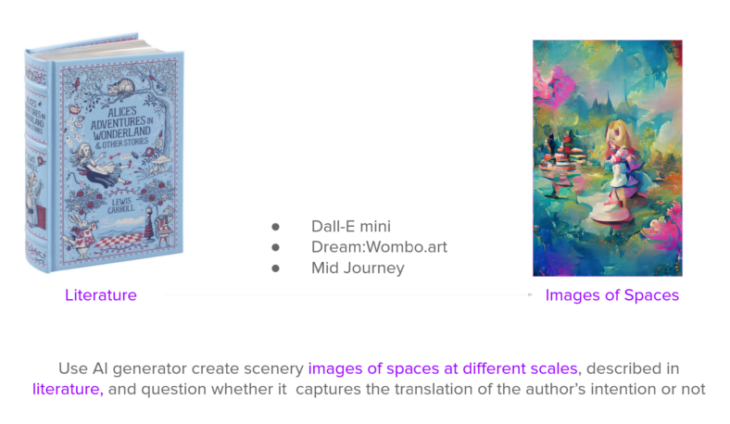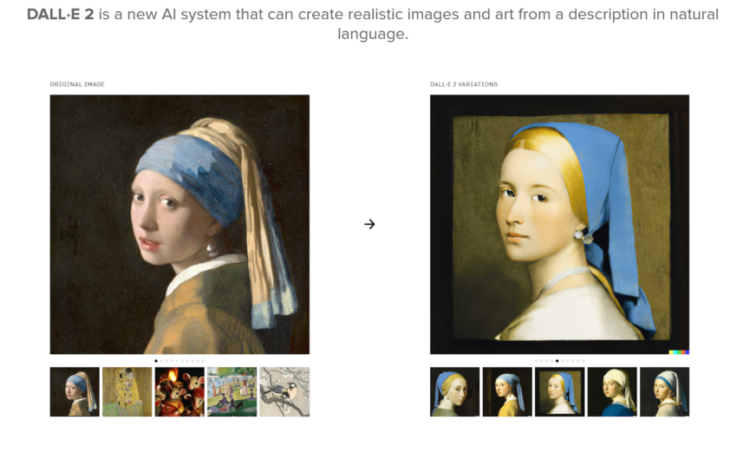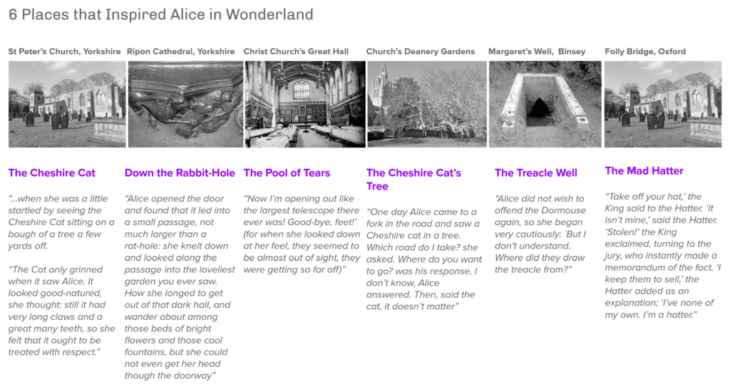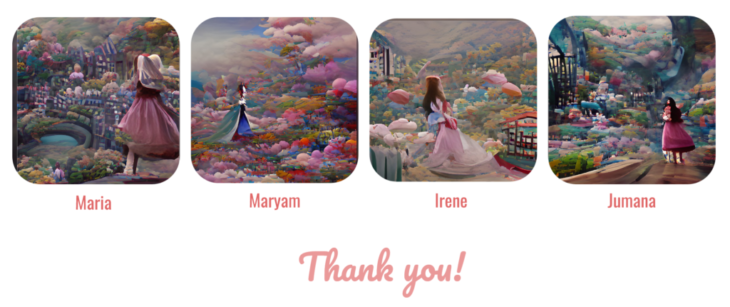ALICE’S ADVENTURES IN WONDERLAND
Can ML capture the concept intention of the author?
00| Abstract
This research aims to explore the existing AI generator tools that create scenery images of spaces at different scales, as described in the literature, and question whether it captures the translation of the author’s intention or not. For the State of the Art, we looked at DALL·E 2 as a new AI system that can create realistic images and art from a description in natural language. As a case study, we chose six passages described by the author in the book (the Cheshire cat, the rabbit hole, the pool of tears, the Cheshire cat’s tree, the treacle well, and the mad hatter). These pieces included detailed descriptions of imagined scenarios that were inspired by real architectural spaces, which might help us in extracting the conclusions from the generated outputs when tackling our original question: can machine learning capture the intention of the author? As an exercise to help us figure out.
01| Aims
We used three tools to test our results:
- Disco Diffusion v5.4 is a free tool can be used to create “AI” generated art, both images and videos.
- Dalle mini is a free tool can be used to create “AI” generated art, both images and videos.
- Dream:Wombo.art a free too to AI generate art from text
- MidJourney is a tool under testing that can be used to create “AI” generated art, both images and videos.

02| State of the Art
For the State of the Art, we looked at DALL·E 2 as a new AI system that can create realistic images and art from a description in natural language.

03| 6 Places that Inspired Alice in Wonderland
As a case study, we chose six passages described by the author in the book (the cheshire cat, the rabbit hole, the pool of tears, the cheshire cat’s tree, the treacle well and the mad hatter). These pieces included detailed descriptions of imaginated scenarios that were inspired by real architectural spaces, which might help us in extracting the conclusions from the generated outputs when tackling our original question: can machine learning capture the intention of the author? As an exercise to help us figure out, we want you to imagine the following texts:

6 Places that Inspired Alice in Wonderland
04| Conclusions
After testing the tools we concluded the following:
- The algorithm works better when making direct references: Using keywords such as ‘Alice’ produces more accurate results
- Keywords over paragraphs: Using nouns and adjectives over conjunctions results in a higher definition
- If the dataset contains illustrations from the book, these will be mimicked: Therefore, on-depicted books might produce less accurate
- Dream Wombo. art is more creative: The app has more artistic styles that can trigger the readers’ imagination
- MidJourney has more pop culture references, is able to generate an image with 1792×1024, and has this preference of leaning more toward painted art rather than photorealistic
- While Dall-E mini, is stuck at 1024×1024 resolution, and couldn’t capture unrealistic scales as described in the book, but at least can take an existing image as an input and generate variations


05| Raised Questions
After testing the tools the following questions were raised
- Who trained the Dataset of this model?
- Does AI understand the sequence of events? Or the specific location of features?
- How does the algorithm deal with adjectives?
- How does the algorithm deal with feelings described in a story?
- Can it understand dialogues in a story?
- What is its sense of space like? Can it capture unrealistic scale of people, objects, places etc?
- So which tool is better?
It depends on your needs!
“If you need a free, but lower resolution result, then Dall-E mini is the way to go. If you need a more detailed, higher resolution result, and willing to shell out a few bucks, then MidJourney is the best choice.”
Choose carefully depending on what you want to get.

ALICE’S ADVENTURES IN WONDERLAND is a project of IAAC, Institute for Advanced Architecture of Catalonia developed in the Master of Advanced Computation in Architecture and Design 2021/22 by Students: Maria Papadimitraki, Maryam Deshmukh, Irene Martín, Jumana Hamdani, Faculty: Zeynep Aksöz, Mark Balzar

